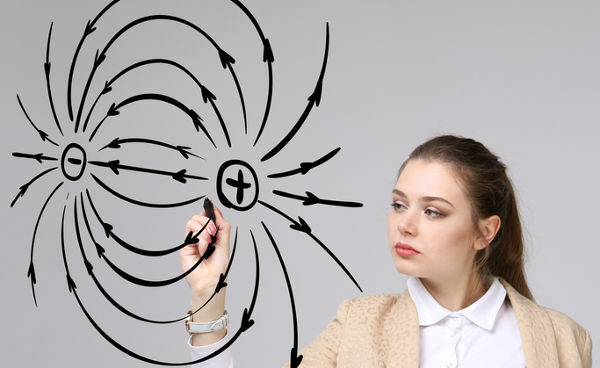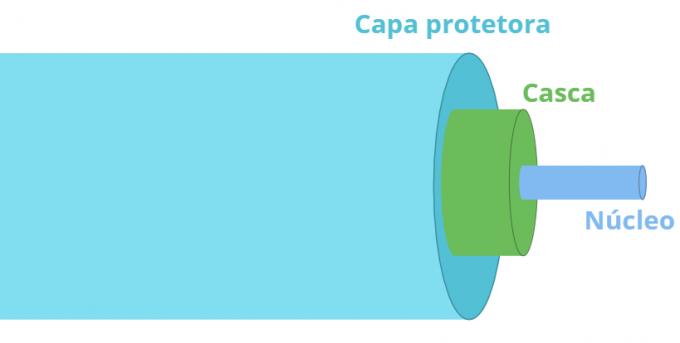Capacitors are devices used for the storage of electrical charges. There are capacitors of different shapes and capacitances. Nevertheless, they all share something in common: they are formed by two terminals separated by some dielectric material. Capacitors are used in various technological applications. It is practically impossible for us to find any electronic circuit that does not contain this type of device.
When linked to a potential difference, a electric field forms between its plates, causing the capacitors to accumulate charges at their terminals, since the dielectric inside makes it difficult for electrical charges to pass through the plates.
Lookalso: What is dielectric strength?
Capacitors function
The most basic function of the capacitor is that of store electrical charges inside. During discharges, capacitors can provide large amounts of electrical charge to a circuit.
Capacitors take a short time to fully charge, however, their discharge is generally fast. Therefore, capacitors are widely used in electronic devices that demand great intensities of electric current, as high power stereos.
In addition to their most fundamental function, capacitors can be used to implement timers, rectifiers of electric current, line filters, stabilizers etc.
Lookalso: Electric circuits
Do not stop now... There's more after the advertising ;)
Types of Capacitors
Capacitors can differ in their shape as well as their dielectric. The medium that is inserted between the plates of a capacitor interfere directly in its ability to store electrical charges. Means that present constant highs electrostatic, that is, highly resistive, are preferred for the implementation of capacitors.
Check out some types of capacitors:
Electrolytic Capacitors: contain thin layers of aluminum, involved in oxide aluminum and soaked in liquid electrolytes.
Polyester Capacitors: are a very compact type of capacitor, formed by sheets of polyester and aluminum.
Tantalum Capacitors: have a longer service life, use as a dielectric or oxide of Tantalus.
Oil Capacitors: they were the first types of capacitors and, like paper capacitors, they stopped being used because they were impractical or unreliable.
Variable Capacitors: are those that have valves capable of controlling the distance between the plates or their contact area, widely used in valved devices, such as radios and old televisions
Ceramic Capacitors: made in a disc shape, they are made of conductive plates that envelop a medium such as paper, glass or air.
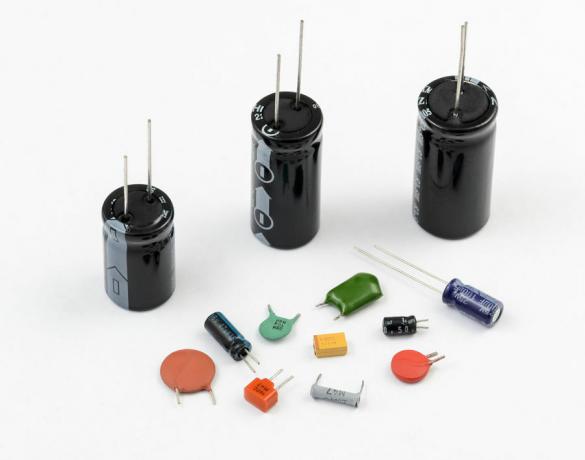
There are different types of capacitors, with different characteristics and uses.
Parallel Plate Capacitor
The parallel plate capacitor is the type of capacitor that presents simpler geometry. This type is formed by an armor, made of conductive material and encased in a dielectric medium, high electrical resistance (such as vacuum, paper, rubber, oil etc.). The following figure shows a diagram of a parallel plate capacitor:
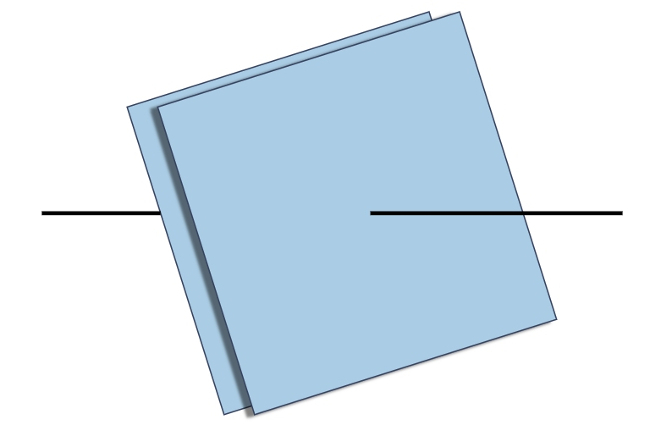
The parallel plate capacitor is the simplest of the capacitors.
Lookalso:What is LED?
capacitance
The property that measures the efficiency of a capacitor in storing charges is capacitance. Capacitance is a physical quantity measured in Coulomb units per Volt (C/U), better known as Farad (F), after the English physicist Michael Faraday (1791-1867). We say that 1 Farad is equivalent to 1 Coulomb per Volt. The formula used to calculate capacitance is this, check it out:

Ç — capacitance (F)
Q — electric charge (C)
U — electrical voltage (V)
From a practical point of view, capacitance indicates what is the quantity of charges that a capacitor can “hold” for a given potential difference.
Capacitance also depends on factors geometric, that is, the distance between the capacitor plates and also the area of these plates. Therefore, for the case of parallel plate capacitors, we can determine their capacitance through the following equation:

ε0 — vacuum dielectric permittivity (F/m)
THE — area of plates (m²)
d — distance between plates (m)
Lookalso:What is electromotive force
solved exercises
Question 1) Calculate the modulus of the capacitance of a 0.005 m² parallel plate capacitor, spaced 0.5 mm apart (0.5.10-3 m). adopt ε0 = 8,85.10-12.
a) 44.25 nF
b) 88.5 pF
c) 885 pF
d) 0.88 mF
e) 2.44 F
Template: Letter B
Resolution:
To calculate the capacitance modulus of this parallel plate capacitor, we will use the data provided by the exercise and we will use the formula that relates the area to the distance between the plates:
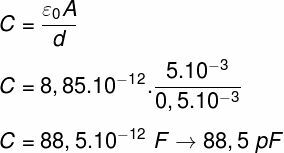
The result we found for capacitance is 88.5.10-12 F. However we can use the prefix pico (p = 10-12) to represent this quantity.
Question 2) A certain capacitor is capable of storing up to 2 µC of electrical charge when connected to a potential difference of 1 mV. Determine the capacitance of this capacitor.
a) 2 mF
b) 1 mF
c) 0.5 nF
d) 100 pF
e) 0.1 F
Template: Letter THE
Resolution:
It is possible to calculate the capacitance through the ratio between the amount of stored electrical charge and the potential difference between its terminals:
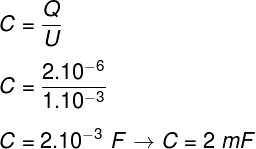
The result indicates that the capacitance obtained is 2 mF (2.10-3 F). Therefore, the correct alternative is the letter A.
Question 3) Determine the magnitude of the electrical charge stored in a 0.5 mF capacitor when connected to a potential difference of 200 V.
a) 1.5 µC
b) 0.2 pC
c) 0.1 µC
d) 10 nC
e) 100 mC
Template: Letter AND
Resolution:
Let's calculate the amount of electrical charge stored in this capacitor:

According to the calculation made, the amount of charge stored in this capacitor is 100 mC (100.10-3 Ç).
Question 4) Determine what voltage needs to be drawn across the terminals of a 0.2 capacitor μF, so that 2 nC of electrical charges are stored between their armatures.
a) 0.2 V
b) 2 µV
c) 200 μV
d) 1 mV
e) 10 mV
Template: Letter AND
Resolution:
Let's calculate the electrical voltage established between the capacitor terminals:

According to the result, 10 mV are needed for this capacitor to be able to accumulate 2 nC of charge, so the correct alternative is the letter AND.
By Me. Rafael Helerbrock
Would you like to reference this text in a school or academic work? Look:
HELERBROCK, Rafael. "Capacitors"; Brazil School. Available in: https://brasilescola.uol.com.br/fisica/capacitores.htm. Accessed on June 27, 2021.

